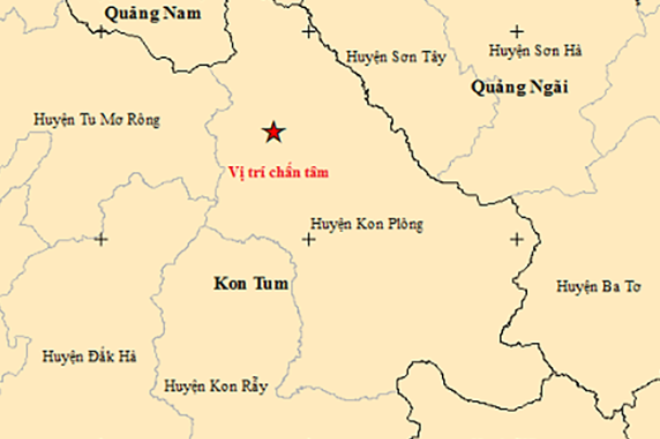
The Earthquake and Tsunami Warning Center of the Institute of Geophysics reported two significant earthquakes in Kon Tum today. The first earthquake struck at 11:17 AM with a magnitude of 4.1, followed by a larger 5.0 magnitude earthquake at 11:35 AM. The epicenter of the larger quake was located at coordinates (14.827°N, 108.245°E) with a focal depth of approximately 8.1 km.
Residents across the affected regions reported feeling strong shaking. In Da Nang, Ho Xuan Hung from Hai Chau district noted that items on shelves and tables shook for about 10 seconds. "I clearly felt the shaking and immediately suspected an earthquake. After checking with friends online, I confirmed it was due to the quake in Kon Tum," Hung shared.
In Tam Ky city, Quang Nam, located more than 100 km from the epicenter, residents also felt the tremors. Tran Duc Minh from Quang Nam described how the earthquake caused windows to rattle and household items to shake for several seconds.
Thua Thien Hue also experienced noticeable tremors. In Hue, the ground shook for 5-6 seconds, causing windows to vibrate. Similarly, residents in Son Long commune, Son Tay district, Quang Ngai, reported feeling the earthquake's effects.
Nguyen Xuan Anh, Director of the Institute of Geophysics, explained that the observed phenomenon was related to induced seismicity from reservoir operations. The occurrence of induced seismicity depends on geological activity, reservoir volume, elevation, and the rate and frequency of water filling.
So far this year, Vietnam has recorded 65 earthquakes, with 54 occurring in Kon Tum alone, ranging from 2.5 to 4.0 in magnitude. Other provinces such as Quang Nam, Yen Bai, Hanoi, Phu Yen, Tuyen Quang, Dien Bien, Ninh Binh, and Thanh Hoa also experienced minor quakes.
Xuan Anh added that while the 5.0 magnitude earthquake is considered moderate, local authorities need to assess any potential damage. Future earthquakes in Kon Tum are expected to continue but are unlikely to exceed 5.5 in magnitude.
As urbanization and infrastructure development continue, assessing seismic hazards becomes increasingly crucial. Regular updates on earthquake risk assessments are necessary for effective urban planning and the construction of earthquake-resistant structures.
Dinh Hieu